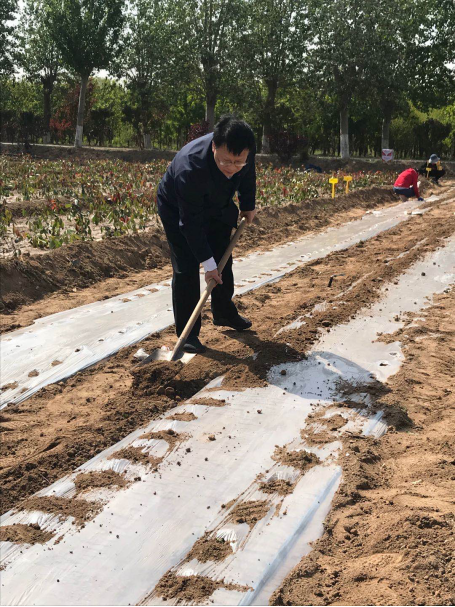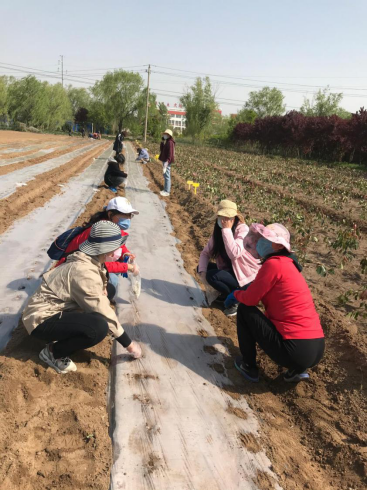On April 25, all members of the Cotton Innovation Team, more than 50 teachers from the School of Agriculture Science and Technology, School of Forestry Engineering, and School of Information Science and Engineering participated in this cotton planting activity during anti-epidemic time. Yang Zhenning, member of the School Party Committee and Vice President of SDAEU, participated in this cotton planting activity in the Cotton High-Tech Demonstration Garden of North Campus.

The anti-epidemic task cannot be ceased, and scientific research work cannot be lost. In response to the adverse impact of the COVID-19 pandemic on scientific research and production, school leaders and teachers came to the site of the test base to participate in the cotton planting activity. Vice President Yang Zhenning disregarded the wind and sand, and personally went to the field to participate inthe planting, continued to work for 6 hours, including membrana tectoria, dibbling seeding, and earth covering. Professor Chen Hongzhang, a well-known 70-year-old cotton expert from the Academician Workstation, went to the scene to give a demonstration guide, and explained in detail the technical points and precautions of sowing. In the course of labor, enthusiastic teachers worked together with great confidence and motivation. Work tasks planned for two days are completed in just one day. Their clothes soaked by sweat, but the teachers were still working with cheerful laughters, which constituted a beautiful picture of labor.


Carrying out cotton innovation research is an important measure for our school to serve the rural revitalization and the development of modern and efficient agriculture. The School Party Committee and school administration attached great importance to it, continued to strengthen the connotation construction of the Cotton Innovation Research Institute, and established many Scientific research platforms, such as molecular breeding lab, smart greenhouses, and Agricultural and Forestry Big Data Engineering Technology Center, aiming at the prominent problems and bottlenecks existing in the development process of the cotton industry, used molecular marker-assisted breeding technology and Agricultural Internet of Things, big data and other technologies and methods, conducted the selection of new cotton varieties with high quality, high production, multi-resistance, suitable for machine picking, developed advanced technologies such as machine-harvested cotton and non-mulching cotton cultivation, enhanced the mechanization of the industry, and broke through the key technical bottleneck constraints in the cotton industry. Last year, our school and Xinjiang Shouxin Seed Industry jointly conducted a breeding experiment on more than 1,000 varieties of resources, and carried a comparative demonstration of more than 40 cotton varieties. This year, 800 selected high-quality individual plants will be continued to undergo systematic breeding experiments. The development of innovative research on cotton will play an active role in promoting the cotton supply-side structural reform, promoting the integration and development of cotton's primary, secondary and tertiary industries, and helping the revitalization of the cotton industry in our province.